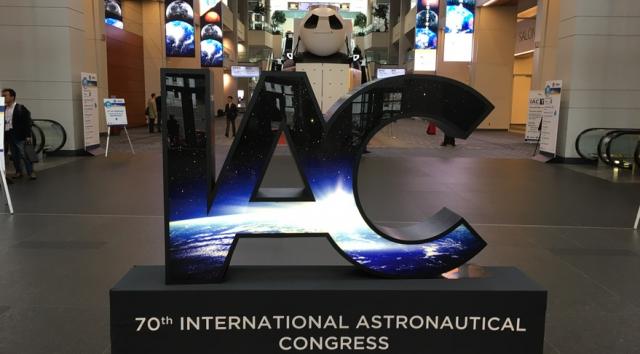Crunch Time and Type 2 Fun
October 29, 2019By Sandy Antunes, with Jorge Rodriguez, and R. Pierce Smith
At the Wednesday, October 23, 2019 International Astronautical Congress (IAC) conference here in DC, in session “E2.4. Educational Pico and Nano Satellites”, student Jorge Rodriguez is presenting on our Cactus-1 team’s 3 years of work. With our nice, direct title of “Tackling Constraints and Risks in an All-Student CubeSat Build”, Jorge is our point person and a great example of how our students are crushing it, academically.
For this talk, Jorge elaborates what our students really found works. Of these, the most interesting to me is that Crunch Time (those all-night efforts when close to a delivery deadline) wasn’t always bad. Former Cactus-1 student lead R. Pierce Smith, writing on ‘successful ‘Final Push Efforts’ by hard working students to complete milestones”, describes it thus:
"The team members that stayed on CACTUS-I would come to the lab to work for the whole day and night with the rest of the team. These times were often the most productive and most fun, keeping teammates coming back. Final Push Efforts are common with University programs because students still have to attend class and complete homework. Students focusing their effort on one day synchronously is extremely beneficial."
There’s a concept called Type 1 vs Type 2 Fun. Type 1 fun is both fun while you’re doing it and also later you say “wow, that was fun.” Type 2 Fun often is hard and stressing and seems not-fun while you’re actually doing it, but when you later look back, you think “wow, that actually was fun.” Often items like running a marathon are considered “Type 2 Fun”. Using Pierce’s write-up, it seems final pushes on cool projects-- the hallmark of undergraduate work-- counts as Type 2 Fun.
How students find time to not just work on projects but also present is itself a mystery. Just to add to what I admit is a bit of bragging about our students... the talk is itself a spinoff of our CubeSat Cookbook series, funded partially by the Maryland Space Grant Consortium and written primarily by students and from interviews with student team members. It’s made available to the world, freely, up at https://github.com/sandyfreelance/cactus-open.
So if you’re keeping count, this means our students designed and built a satellite, published e-books and schematics on it, and now are hitting the talk circuit. We’ve had a half dozen students present talks and posters at conferences such as IAC, NASA AAQ, and others, with a 100% acceptance rate.
Most people don’t like public speaking but do like the career bump and accolades giving a talk brings. There’s also the satisfaction of completing it. I’m well aware that, for Jorge, preparing and presenting this talk wasn’t high on his list of fun activities. I’m also betting his talk will be classic Type 2 Fun. This is, like most academic opportunities, less the result of pre-planning and more an example of how our students rise to the occasion and excel as a result.
*********
For the curious, here is the full abstract of Mr. Rodriguez’s talk: “We address lessons learned in building our first CubeSat, and the subsequent open source release of the bulk of its components to the community. That it was built at all is testament to our students, and we candidly talk about how the next generation can benefit from both our work, and changes we note in the evolving university space market. Issues ranged from a switch from parallel to serial development of components, the difficulty in learning as you build due to time constraints, and the importance of meeting milestones by de-scoping rather than adding risk. By defining a university-class mission as experimental, we recommend the launch community agree to allow for ‘do no harm’ testing as the gold standard to encourage access to space for smaller teams. We also cover items that went well, in particular structural and test evolutions we’ve provide back to the community. Our use of an Agile workflow is recommended both due to the work environment (academic) and to meet changing time frames (experimental design).We also achieve the milestone of having a secondary payload on a 3U CubeSat, which increase mission success by providing redundant success criteria. Finally, we discuss the balance between heritage and new designs, and suggest that documentation quality is as or more important than flight heritage. Our Combined Advanced Capitol Technology University (CACTUS-1) CubeSat’s launch is part of the NASA CubeSat Launch Initiative (CSLI) program and with support from the MD Space Grant Consortium.”



